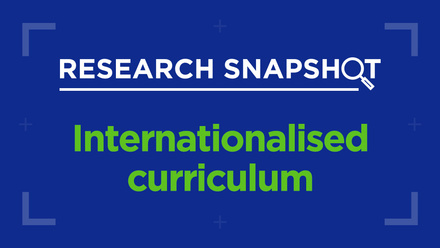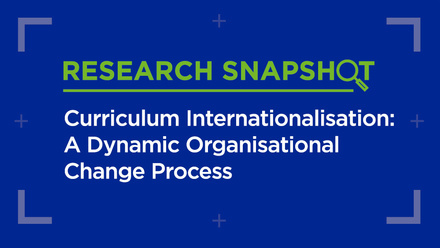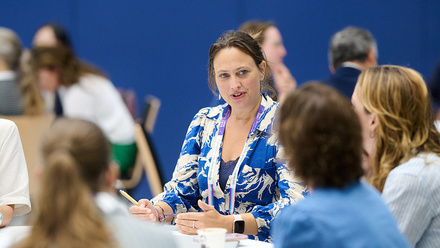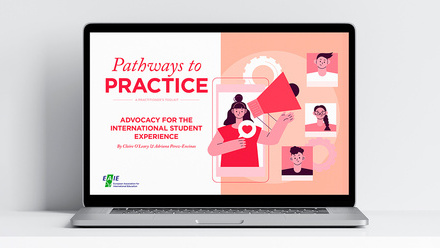7 aspects of internationalised academic departments

Creating globally competent graduates is hard to do without buy-in from the various academic departments on campus. But what does it really mean to customise internationalisation to the academic disciplines, and how can international education professionals support this process?
Let’s start with a quick pop quiz for internationalisation professionals:
- What is the foundation for developing our students’ global competencies? (Answer: Internationalisation of our curricula.)
- What is at the heart of internationalising our university’s curricula? (Answer: Our faculty.)
- With what do faculty primarily concern themselves? (Answer: Their individual departments’ goals, values, and their individual teaching and research agendas.)
- How can we shift our university’s academic departments towards an international focus? (Answer: Customising internationalisation to unique disciplinary priorities.)
How did you do? No doubt, as an internationalisation leader, you soared through those questions. Perhaps you found them thought provoking. Moving the ball forward, the next question is: What does it really mean to customise internationalisation to disciplinary priorities, and how can international education professionals support this process? For starters, it’s important for us to become better acquainted with how best to approach internationalisation within the confines of academic units.
So, here’s some food for thought. In an ideal world, a purposefully internationalised academic department should have the following seven characteristics.
1. A clearly-articulated vision for what internationalisation means for that department.
Here, efforts have been undertaken to reflect on and find a meaningful answer to the question: “What does this department ‘look like’ as an internationalised department?” This will likely involve engaging in fundamental discussions about the scope and nature of programmes offered, the type of faculty that should be recruited to the department, and the vision and priorities set.
2. The existence of explicit links between departmental academic goals and internationalisation.
This process implies coming to a consensus on how internationalisation can and should advance the department’s core academic objectives, typically in relation to learning, teaching and research. Key questions here might include: How can internationalisation advance students’ critical thinking within the discipline or their professional development as they move into their careers?
3. Clearly-articulated global learning outcomes for each academic department.
Integrating internationalised learning outcomes is crucial for internationalising teaching and learning. This process implies coming to consensus on the question: What international knowledge, skills, and attitudes will help each department’s graduates succeed in their fields?
4. The presence of specific faculty engagement strategies for internationalisation within each academic department.
Here, efforts have been undertaken to connect internationalisation initiatives with faculty members’ scholarly interests. Explicit links may be made in terms of how the following initiatives might be helpful in advancing individual faculty members’ specific teaching and research agendas: course-embedded short-term study abroad (ie 1 week), international student involvement, transnational research, transnational classroom partnerships, global problem solving and international development activities.
5. The existence of departmental support for faculty engagement in internationalisation.
In this context, efforts have been made by the senior international officer (SIO) in conjunction with the campus-wide internationalisation committee to articulate the institution’s intentions for internationalisation. This will likely involve developing an institutional definition for an ‘internationalised course’ and encouraging faculty to consider how their courses are connected to global issues. This may also involve developing a rubric to assess if a course is internationalised, providing examples of internationalised syllabi, offering guidance to integrate study abroad into majors and courses, developing programmatic support for international visitors to speak in on-campus courses, and both providing internal funding resources and publicising external ones for faculty to engage in international teaching and research. It is often useful for institutions to develop faculty excellence in international teaching and research awards.
6. The development of global learning outcome assessments.
For this process, it is useful to ask departments to outline desired global learning outcomes specific to their disciplines. It may be useful to consider using the rubrics of (1) knowledge, (2) skills and (3) attitudes. Assessment methods might include a capstone essay demonstrating mastery of global learning, a global learning portfolio that demonstrates global learning throughout semesters, a capstone global learning inventory, or intercultural competency survey instruments. For such survey instruments, it may prove helpful to consult widely-used global learning assessments that provide validated mechanisms, ie the Global Perspective Inventory (GPI), Intercultural Development Inventory (IDI), Cross-cultural Adaptability Inventory (CCAI), or Beliefs, Events, and Values Inventory (BEVI).
7. The development of faculty engagement in internationalisation assessments.
This process involves asking departments to quantify and assess faculty engagement in internationalisation. Key faculty goal measures to consider include: international content, perspectives and experiences incorporated into syllabi; received grants that support international research; publications in international journals; being invited as a speaker at international conferences; inviting faculty from abroad to speak in classrooms and at conferences on campus; and international teaching, research or service awards received. This process might also entail creating a department-level assessment of faculty engagement in internationalisation. Here, it may be useful to consider developing a rubric that includes the department’s vision and goals for internationalisation (including a shared vision, verifiable objectives, and improvement-oriented evaluations), the department’s global learning outcomes (including intended learning outcomes, student assessment, and graduate achievement), and the department’s curriculum internationalisation (including both curriculum and teaching methods).
By working collaboratively with your university’s president/rector, provost/vice rectors, internationalisation committees, and faculty departmental liaisons to think concretely and in ways that enrich the academic mission, you can begin to develop mechanisms and channels to get to the heart of motivating faculty to internationalise—within their disciplines and at the epicentre of their work: their academic departments.






